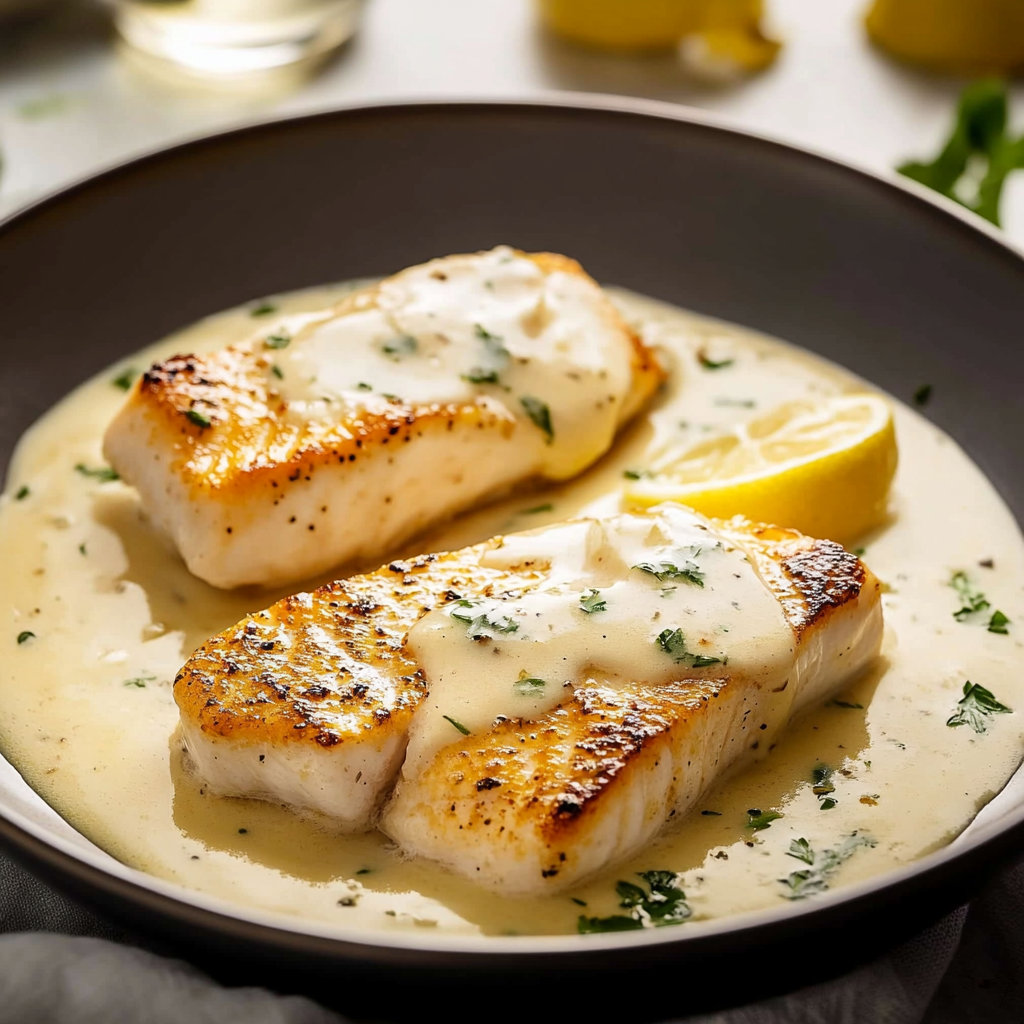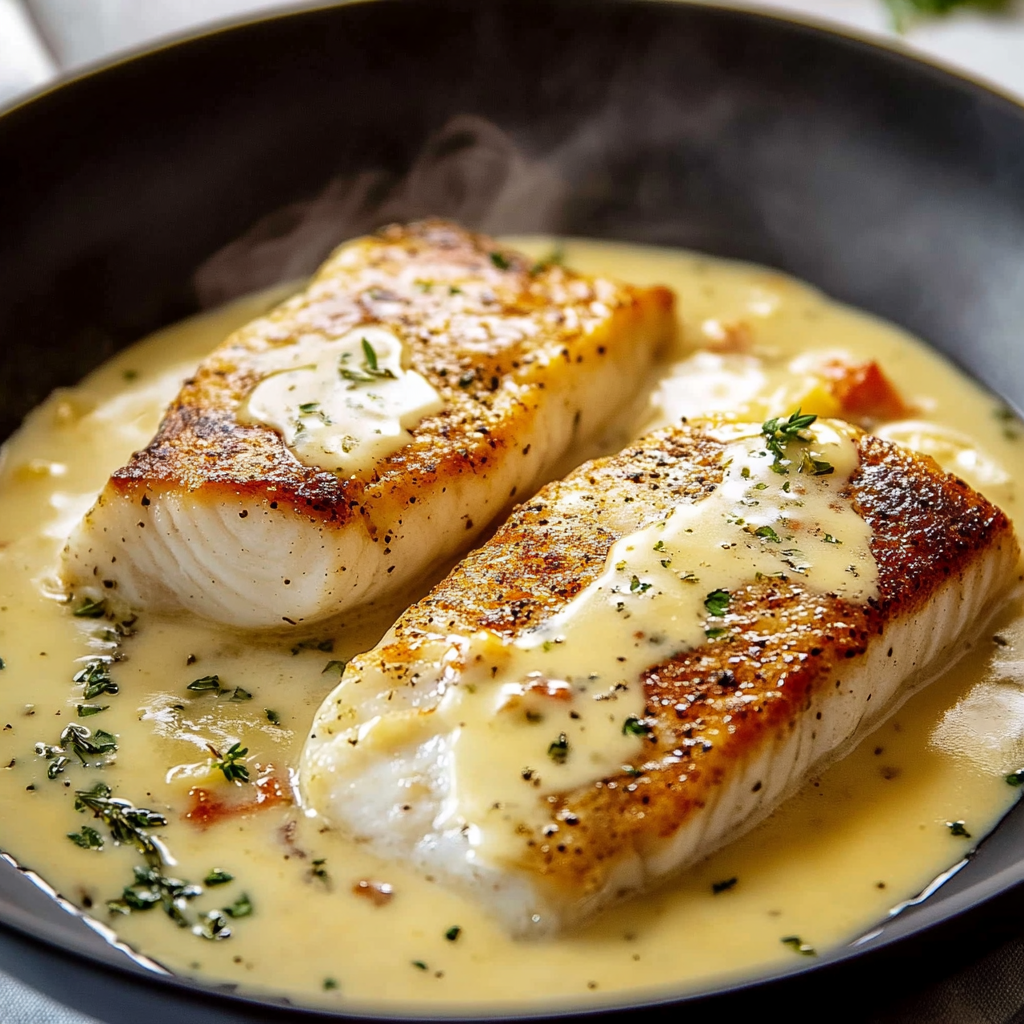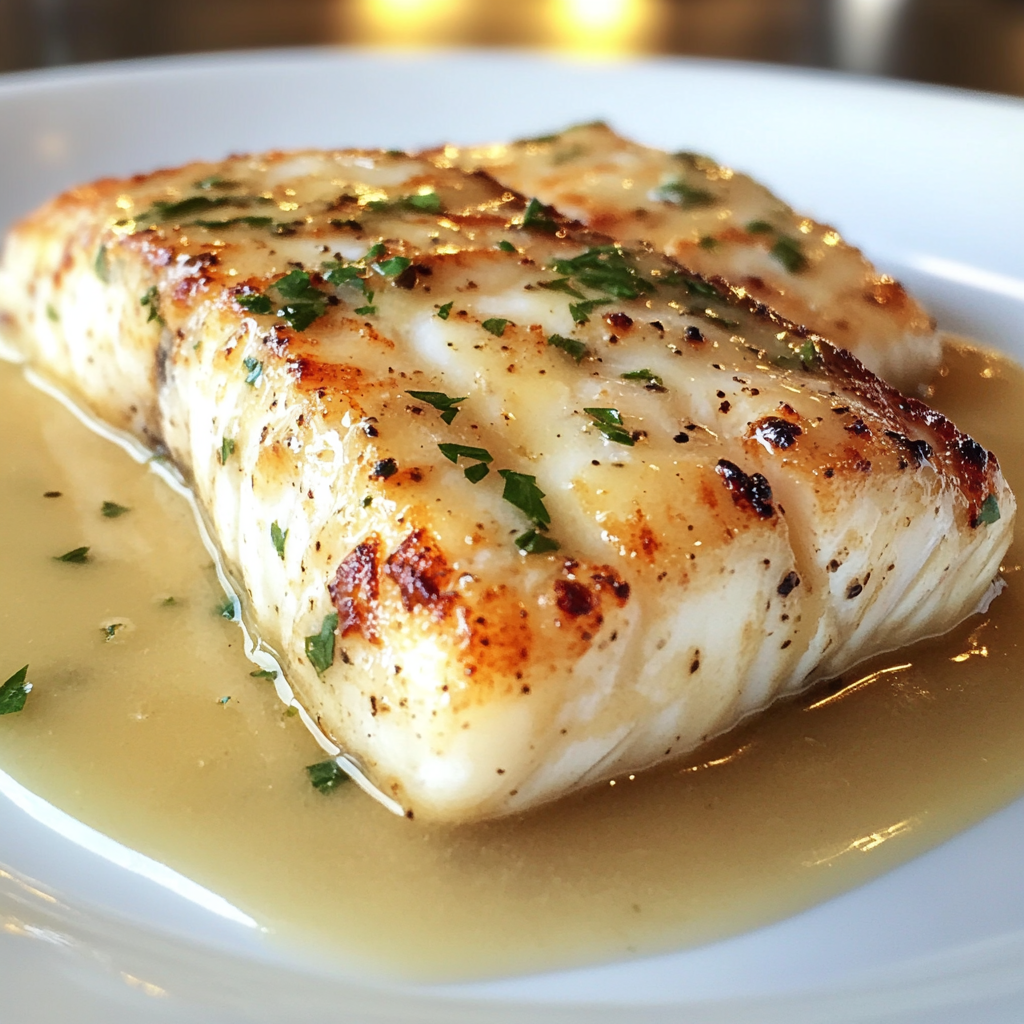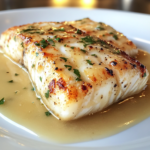Quick Overview
If you’re looking for a delightful dish that combines sophistication and comfort, try this Fish with White Wine Sauce. This recipe brings together the delicate flavors of fresh fish and the rich taste of white wine, creating an irresistible meal. Perfect for a cozy dinner at home or impressing guests, you will find that this dish is not only simple to prepare but also bursting with flavor. With just a few ingredients and straightforward steps, you can create a stunning plate that elevates any occasion.
Ingredient Breakdown
Fresh Fish
For this recipe, choose about 1 pound of fresh fish fillets such as cod, sole, or tilapia. Freshness is key as it ensures the best flavor and texture in your dish.
White Wine
You will need 1 cup of dry white wine. A good quality Sauvignon Blanc or Chardonnay works well. The wine enhances the flavor of the fish while adding depth to the sauce.
Olive Oil
Use 2 tablespoons of extra virgin olive oil for sautéing. Olive oil adds richness and helps to create a nice sear on the fish fillets.
Garlic
Incorporate 3 cloves of minced garlic. Garlic infuses an aromatic essence into the sauce which complements the other ingredients beautifully.
Lemon Juice
You will need the juice from one lemon (about 2 tablespoons). Lemon juice brightens up the dish and balances the flavors of the sauce.
Fresh Herbs
Prepare ¼ cup of chopped fresh parsley or dill for garnish. Fresh herbs bring freshness and color to your finished plate.
Salt and Pepper
Season with salt and pepper to taste. These basics enhance all flavors in your dish without overpowering them.
Step By Step Recipe: Fish with White Wine Sauce
Step 1: Prepare Ingredients
Start by gathering all your ingredients on a clean workspace. Rinse the fish fillets under cold water and pat them dry with paper towels. Season both sides generously with salt and pepper to ensure even flavor throughout cooking.
Step 2: Heat Oil in Pan
In a large skillet over medium heat, add 2 tablespoons of olive oil. Allow it to heat until shimmering but not smoking. This ensures an optimal sear on your fish fillets without burning them.
Step 3: Sear Fish Fillets
Carefully place the seasoned fish fillets into the hot skillet. Cook for about 3-4 minutes on each side until they’re golden brown and easily flake apart with a fork. Remove from the skillet and set aside on a warm plate.
Step 4: Sauté Garlic
In the same skillet, add minced garlic and sauté for about 30 seconds until fragrant but not browned. This step releases natural oils from garlic which enhance the overall flavor profile of your sauce.
Step 5: Add White Wine
Pour in 1 cup of dry white wine carefully into the pan after removing garlic. Increase heat slightly and allow it to simmer for about 5 minutes until reduced by half. The reduction intensifies flavor while cooking off some alcohol content.
Step 6: Incorporate Lemon Juice
Once reduced, stir in freshly squeezed lemon juice along with additional salt if needed. The acidity from lemon juice balances out richness from olive oil while highlighting essential flavors in your dish.
Step 7: Combine Fish & Sauce
Gently return seared fish fillets back into the skillet, spooning some sauce over them. Let everything cook together for another minute to meld flavors before removing from heat.
Step 8: Garnish & Serve
Sprinkle chopped parsley or dill over your finished dish as garnish just before serving. This adds an eye-catching touch as well as fresh notes that complement seafood perfectly!
Serving and Storing Tips
Serving Suggestion
Serve your Fish with White Wine Sauce immediately while hot alongside steamed vegetables or over a bed of rice or pasta for a complete meal experience that’s sure to impress everyone at the table!
Storing Leftovers
If you have any leftovers, store them in an airtight container in the refrigerator for up to two days. To reheat, gently warm on low heat on stovetop until heated through but avoid overcooking as it may dry out delicate fish texture.
By following this detailed recipe guide, you’ll be able to create an exquisite dish that showcases how simple ingredients can deliver incredible flavors—a true testament to home cooking!
Mistakes to avoid
When preparing fish with white wine sauce, one common mistake is overcooking the fish. Fish should be cooked just until it flakes easily with a fork to maintain its moisture and tenderness. Overcooking can lead to a dry texture that detracts from the overall dish.
Another mistake involves using low-quality wine. Since the sauce relies heavily on the flavor of the wine, opt for a good quality white wine you would enjoy drinking. Cheap wines may produce an undesirable taste that negatively affects your dish.
Many home cooks forget to season adequately. A pinch of salt and a sprinkle of pepper can significantly enhance the flavors in your fish with white wine sauce. Failing to season can leave your dish bland and unappealing.
Not allowing the sauce to reduce properly is another pitfall. Simmering the sauce helps concentrate flavors, creating a rich, delicious blend that complements your fish beautifully. If you skip this step, you might end up with a watery or weak-tasting sauce.
Lastly, ignoring the importance of fresh herbs or aromatics can diminish flavor complexity in your dish. Fresh herbs like parsley or dill added at the end can brighten up the dish dramatically. Skipping this step leads to a less vibrant flavor profile.
Tips and tricks
To create an exceptional fish with white wine sauce, begin by selecting the right type of fish. Opt for mild-flavored varieties like cod, sole, or tilapia. These types absorb flavors well without overpowering them, ensuring that the delicate balance between the fish and the sauce remains intact.
When cooking your fish, use a non-stick skillet for easy flipping and minimal sticking. This makes it easier to achieve a perfect sear on each side without tearing apart the fillet. Additionally, ensure your skillet is hot before adding oil; this creates a nice crust that adds texture and flavor.
Pairing your wine correctly is crucial. A crisp Sauvignon Blanc or a light Pinot Grigio works wonderfully in this recipe. The acidity of these wines cuts through richness while complementing the flavors of both fish and any added herbs.
While preparing your sauce, don’t rush the process of sautéing garlic and shallots in butter before adding wine. This step allows for deeper flavor development as these ingredients caramelize slightly before introducing liquid elements. Patience here will pay off with rich undertones throughout your dish.
Finally, serve immediately after cooking for optimal taste and texture. Fish is best enjoyed fresh off the heat; waiting too long may cause it to lose its appeal as it cools down and becomes less tender.
Suggestions for Fish with White Wine Sauce
Consider serving fish with white wine sauce alongside seasonal vegetables for a balanced meal. Steamed asparagus or roasted Brussels sprouts bring both color and nutrition to your plate while enhancing overall presentation.
For added depth of flavor, incorporate capers into your sauce as they lend a delightful brininess that complements white wine perfectly. This addition enhances not just taste but also adds visual interest with their unique shape.
If you want a creamy variant of this dish, consider finishing your sauce with a splash of heavy cream or crème fraîche once you’ve reduced it. This transforms your dish into something richer while still maintaining its original charm.
For those looking for carbohydrate options, serve over fluffy couscous or creamy polenta. Both pair excellently with fish and absorb any remaining sauce beautifully for an enjoyable experience.
Lastly, consider garnishing with freshly chopped herbs like parsley or chives just before serving to add freshness and vibrancy—this simple touch elevates both appearance and taste significantly.
FAQs
What type of fish works best for Fish with White Wine Sauce?
Mild-flavored white fish such as cod, sole, tilapia, or halibut are ideal choices for this recipe. Their delicate flavors allow them to absorb the essence of the white wine sauce without being overwhelmed. When selecting fish for this dish, look for fresh fillets that feel firm to touch and have minimal odor.
Can I use frozen fish instead?
Yes, you can use frozen fish; however, it’s essential to thaw it completely before cooking for even results. Pat it dry after thawing to remove excess moisture since wet fillets may steam rather than sear in your pan which could affect texture adversely during cooking.
How do I know when my fish is fully cooked?
Fish is considered fully cooked when it flakes easily with a fork and has reached an internal temperature of 145°F (63°C). Use an instant-read thermometer if you’re uncertain; insert it into the thickest part of the fillet to check doneness without compromising its integrity during cooking.
Can I substitute other types of wine in this recipe?
While white wine is essential for achieving authentic flavor in this recipe, alternatives like dry vermouth or even non-alcoholic substitutes exist if needed due to dietary restrictions or preferences—but they may slightly alter taste profiles compared to traditional options used here.
How long does leftover Fish with White Wine Sauce last?
Leftover fish should be stored in an airtight container in the refrigerator for up to two days at most due to safety concerns related specifically around seafood quality deterioration over time—reheating gently on low heat preserves texture better than microwaving directly from cold storage.
What side dishes pair well with Fish with White Wine Sauce?
Ideal sides include light salads featuring citrus vinaigrettes which complement creaminess found within sauces nicely without overwhelming them along with sautéed greens like spinach or green beans—these additions not only provide color but also elevate meal aesthetics effectively!
Summary
In conclusion, preparing delicious fish with white wine sauce involves avoiding common mistakes such as overcooking and neglecting seasoning while following helpful tips about choosing quality ingredients like fresh herbs alongside proper cooking techniques that ensure optimal results every time! Explore suggested pairings like seasonal veggies or creamy alternatives enhance overall dining experience further elevating enjoyment derived from this flavorful classic dish!
Delicious Fish with White Wine Sauce Recipe
Description
If you’re looking for a delightful dish that combines sophistication and comfort, try this Fish with White Wine Sauce. This recipe brings together the delicate flavors of fresh fish and the rich taste of white wine, creating an irresistible meal. Perfect for a cozy dinner at home or impressing guests, you will find that this dish is not only simple to prepare but also bursting with flavor. With just a few ingredients and straightforward steps, you can create a stunning plate that elevates any occasion.
Ingredients
- Fresh Fish
- White Wine
- Olive Oil
- Garlic
- Lemon Juice
- Fresh Herbs
- Salt and Pepper




